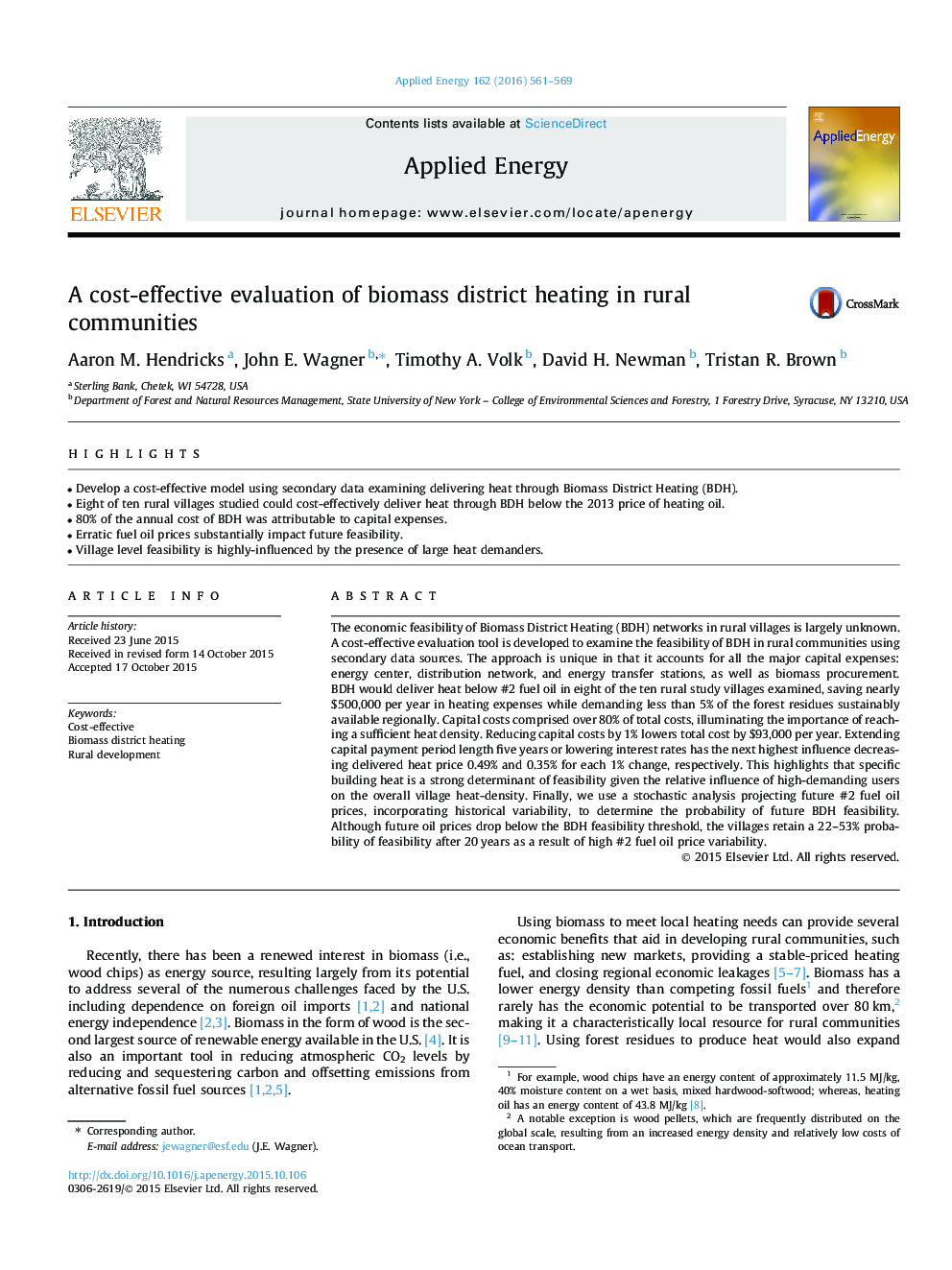| Article ID | Journal | Published Year | Pages | File Type |
|---|---|---|---|---|
| 6684755 | Applied Energy | 2016 | 9 Pages |
Abstract
The economic feasibility of Biomass District Heating (BDH) networks in rural villages is largely unknown. A cost-effective evaluation tool is developed to examine the feasibility of BDH in rural communities using secondary data sources. The approach is unique in that it accounts for all the major capital expenses: energy center, distribution network, and energy transfer stations, as well as biomass procurement. BDH would deliver heat below #2 fuel oil in eight of the ten rural study villages examined, saving nearly $500,000 per year in heating expenses while demanding less than 5% of the forest residues sustainably available regionally. Capital costs comprised over 80% of total costs, illuminating the importance of reaching a sufficient heat density. Reducing capital costs by 1% lowers total cost by $93,000 per year. Extending capital payment period length five years or lowering interest rates has the next highest influence decreasing delivered heat price 0.49% and 0.35% for each 1% change, respectively. This highlights that specific building heat is a strong determinant of feasibility given the relative influence of high-demanding users on the overall village heat-density. Finally, we use a stochastic analysis projecting future #2 fuel oil prices, incorporating historical variability, to determine the probability of future BDH feasibility. Although future oil prices drop below the BDH feasibility threshold, the villages retain a 22-53% probability of feasibility after 20Â years as a result of high #2 fuel oil price variability.
Keywords
Related Topics
Physical Sciences and Engineering
Energy
Energy Engineering and Power Technology
Authors
Aaron M. Hendricks, John E. Wagner, Timothy A. Volk, David H. Newman, Tristan R. Brown,
